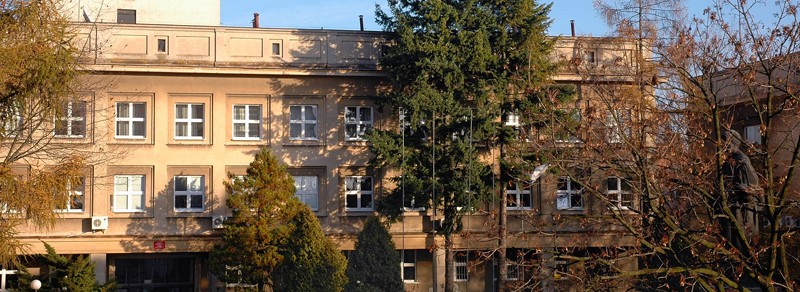The paper "Successive Interacting Coronal Mass Ejections: How to create the Perfect Storm ?" published in the Astrophysical Journal and co-authored by Stefaan Poedts, is highlighted in the ASS Nova - site of the American Astronomical Society devoted to present research highlights.
Professor Tadeusz Domański with a great success
We are pleased to announce that Professor Tadeusz Domański is awarded in the Weave-UNISONO 2022 grant proposal call for research projects involving teams from Poland and the Czech Republic. Together with the group of Dr. Tomas Novotný from the Charles University in Prague, prof. Domański will deal with the topic "Superconducting nanohybrids in non-equilibrium conditions". The National Science Center awarded the Maria Curie-Skłodowska University in Lublin and the University of Adam Mickiewicz in Poznań, total funds of PLN 1,393,236 to conduct these studies.
Congratulations!
Professor Marek Rogatko with a great success
We are pleased to announce that Professor Marek Rogatko was awarded in the 23rd edition of the OPUS grant from the National Science Center. Funds in the amount of PLN 695,880 were allocated to conduct the studies entitled "Black objects in the study of the dark sector". The description of the project is available at: https://www.ncn.gov.pl/sites/default/files/listy-rankingowe/2022-03-15-ako9z8/streszczenia/552214-pl.pdf Congratulations!
Lecture of prof. Stefaan Poedts
On 14th of September 2022 at 12:00 PM in the Congress Center of Uniwersytet Przyrodniczy in Lublin, professor Stefaan Poedts will give a lecture on "Predicting extreme space weather: an extreme challenge!". The presentation is a part of the "Gardens of Ecology" event at the 18th Lublin Science Festival. The seminar was recorded and it is available under the link below: https://www.festiwal.lublin.pl/ https://www.umcs.pl/pl/aktualnosci,4622,zaproszenie-na-wyklady-w-ramach-xviii-lubelskiego-festiwalu-nauki,120913.chtm
Ph.D. defense of Jie Yang
On 3rd of November 2022 Jie Yang defended her Ph.D. thesis entitled “Systematic study of exotic nuclear shape symmetries and isomers, including shape evolution and competition in heavy and super-heavy nuclei". The dissertation has been prepared under the supervision of prof. J. Dudek. The reviewers: prof. M. Kowal, P. Bednarczyk and K. Starosta.
Congratulations!
Ph.D. defense of Bartłomiej Baran
On 14th of October 2022 Bartłomiej Baran defended his Ph.D. thesis entitled "Dynamical properties of superconducting nanostructures". The dissertation has been prepared under the supervision of prof. T. Domański. The reviewers: prof. . Bogdan Bułka, prof. Maciej Maśka and prof. Piotr Magierski.
Congratulations!
Nikola Tesla
Professor Matyjasek together with professor Zgardzińska prepared an article commemorating the achievements of the outstanding scientist.
https://www.umcs.pl/pl/wszystkie-aktualnosci,23641,nikola-tesla-i-jego-wizjonerska-spuscizna,119447.chtm
International day of planetoids
Michał Warda in Spain

403 / 5 000
Michał Warda gave an invited lecture entitled "Continuity of the potential energy surface in fission" at an international conference in Spain. The speech was held as a part of the "Gogny Conference" - the fourth edition of the cyclical meeting of physicists involved in research on the structure of an atomic nucleus based on finite nuclear interactions. This year, scientists met in Granada.
The 20th National Conference on Superconductivity

The XX edition of the National Conference on Superconductivity was held in Lublin on May 22-26, 2022 and was organized by the researchers of the Department of Theoretical Physics of UMCS. This year's meeting focused mainly on the subject of "New phases, concepts and applications". The event was attended by specialists from research institutes from all over Poland. Speeches and discussions touched upon important problems of contemporary research on superconductivity:
- high-temperature superconductors and other highly correlated systems,
- synergy of magnetism with superconductivity in hybrid structures,
- critical phenomena in superconductors and superconductors,
- exotic quasiparticles of topological states of matter,
- dynamic effects in superconducting structures,
- applications of conventional and exotic superconductors …
The detailed conference program can be found at:
